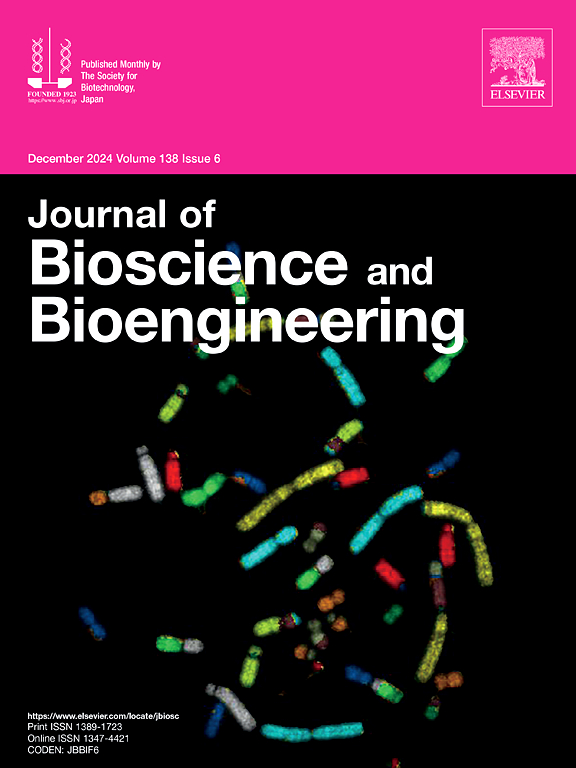Microbial protein production during fermentation of starch-rich legume flours using Aspergillus oryzae and Lactobacillus plantarum starter cultures
IF 2.9
4区 生物学
Q3 BIOTECHNOLOGY & APPLIED MICROBIOLOGY
引用次数: 0
Abstract
Starch-rich faba bean, yellow lentil, and yellow field pea flours were subjected to submerged fermentation using Aspergillus oryzae and Lactobacillus plantarum starter mono- or co-cultures, to increase protein contents of the flours. Fermentation mixes were supplemented with up to 35 g/L urea, ammonium sulfate and/or monoammonium phosphate as nitrogen sources. Protein contents of the flours increased 2–2.5-fold, i.e., total protein contents of up to 33 % were achieved following fermentation with A. oryzae monoculture or A. oryzae‒L. plantarum co-culture. Therefore, A. oryzae was capable of efficient legume starch utilization and protein production. Using A. oryzae‒L. plantarum co-culture led to the highest yields of at least six of microbially produced amino acids. After fermentation by L. plantarum monoculture, protein contents remained largely unchanged. However, in vitro protein digestibility of flours improved to a greater extent after fermentation with L. plantarum monoculture than with either A. oryzae monoculture or the co-culture. Hence, during fermentation with L. plantarum monoculture, microbially mediated hydrolysis of legume protein (generating smaller and easier digestible peptides), rather than microbial starch utilization, was the predominant process.
利用米曲霉和植物乳杆菌发酵剂发酵富淀粉豆粕面粉过程中微生物蛋白的生产。
利用米曲霉和植物乳杆菌发酵剂单培养或共培养,对富含淀粉的蚕豆、黄扁豆和黄田豌豆粉进行了深层发酵,以提高面粉的蛋白质含量。在发酵混合物中添加高达35 g/L的尿素、硫酸铵和/或磷酸一铵作为氮源。用单菌种或单菌种发酵后,面粉的蛋白质含量提高了2-2.5倍,即总蛋白质含量高达33%。杆菌的培养。因此,m.o ryzae能够高效利用豆类淀粉和生产蛋白质。使用a.o oryzae-L。植物共培养至少六种微生物产生的氨基酸产量最高。植物乳杆菌单株发酵后,蛋白质含量基本保持不变。然而,与单培养或共培养相比,单培养植物乳杆菌发酵后面粉的体外蛋白质消化率提高幅度更大。因此,在单培养植物乳杆菌发酵过程中,微生物介导的豆科蛋白水解(产生更小、更容易消化的肽),而不是微生物淀粉利用,是主要的过程。
本文章由计算机程序翻译,如有差异,请以英文原文为准。
求助全文
约1分钟内获得全文
求助全文
来源期刊

Journal of bioscience and bioengineering
生物-生物工程与应用微生物
CiteScore
5.90
自引率
3.60%
发文量
144
审稿时长
51 days
期刊介绍:
The Journal of Bioscience and Bioengineering is a research journal publishing original full-length research papers, reviews, and Letters to the Editor. The Journal is devoted to the advancement and dissemination of knowledge concerning fermentation technology, biochemical engineering, food technology and microbiology.
 求助内容:
求助内容: 应助结果提醒方式:
应助结果提醒方式:


